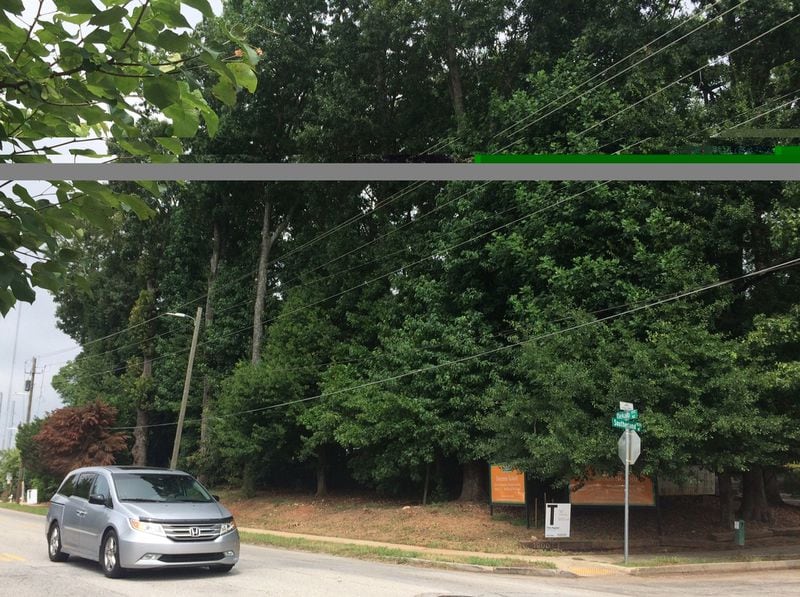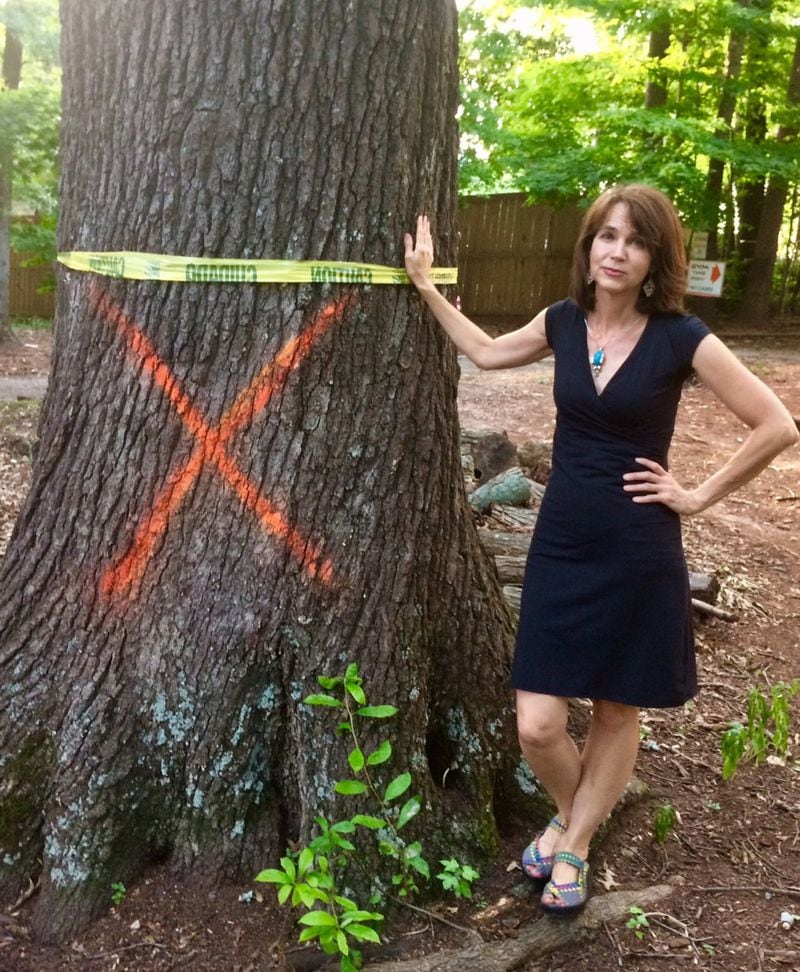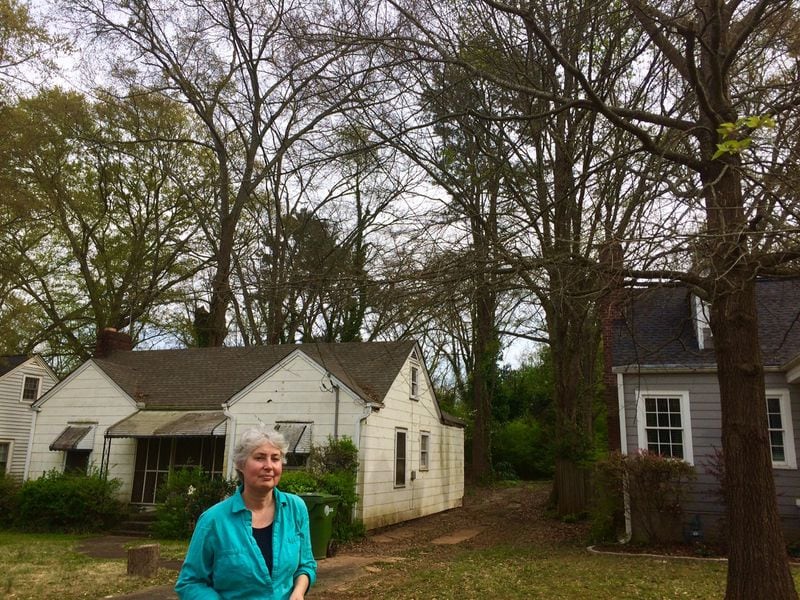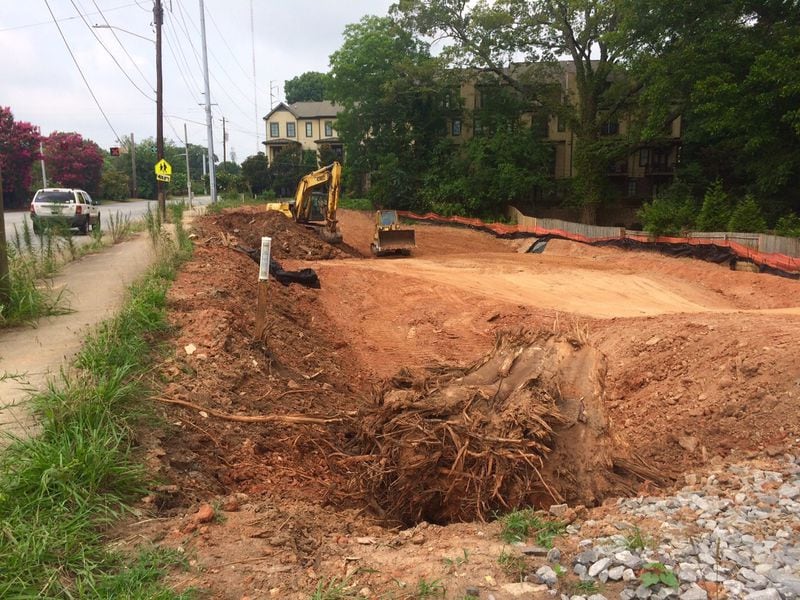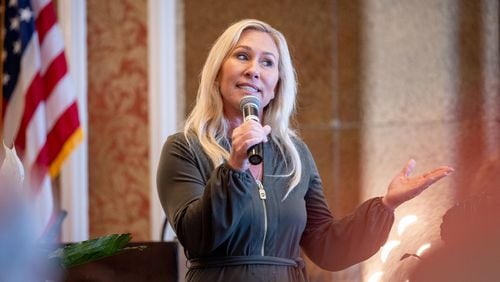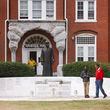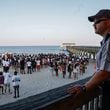Once again, Atlanta, which likes to call itself the “City in a Forest,” is going to see a bit more city and a little less forest.
The latest flash point in that ongoing drive toward deforestation is a block-long stretch along DeKalb Avenue where a small private school once operated.
It’s a 3-acre property shaded by perhaps 250 trees. A few months back, neighbors went into panic mode when they woke up and saw red X’s spray-painted on them. That’s the universal symbol that precedes the sound of chainsaws.
A developer paid $4 million for the tract at 1900 DeKalb Ave., according to records, and wants to squeeze in 43 upscale homes to make it worth his while. DeKalb Avenue used to be a random and drab collection of empty lots, commercial and industrial sites, and homes where people got used to the sound of speeding cars.
These days, it’s fast becoming a 4-mile row of town homes and this is the newest offering.
For the past few years I've written about how the Intown Atlanta boom has taken a terrible toll on the city's vaunted leafy canopy.
A couple of months ago, the popular news website The Daily Beast used this property as the poster child for the city's headlong rush to replace foliage with yuppie housing. It was headlined: "TREE-KY SITUATION. Atlanta's Building Boom Is Destroying Its Famous Forests."
Atlanta has had a goal for a 50 percent tree canopy. And a recent Georgia Tech study that tracked satellite images of urban forest determined that the city’s canopy in 2014 was 47 percent, largely the same as 2008.
That sounds good until you learn that much of that “canopy” spotted in 2014 images was really junk trees and kudzu growing on land that had been cleared in 2008 but remained unbuilt because of the recession.
A then-and-now comparison of 2014 and 2018 (a time when gentrification and development has gone crazy) will cause tree huggers to reach for their Xanax.
The initial plan for the DeKalb Avenue lot called for turning the lush property into a red-clay moonscape before building the upscale units. About 90 percent of the trees were to disappear, including some going back about 200 years.
Interestingly, John Gordon, the Confederate general and later Georgia governor, lived on this property. A street bearing his name is on the list to be changed, so I suppose it’s suiting that any trees he might have encountered should be chopped down.
The neighborhood squawked when it heard about the plans. There was a protest and an appeal filed with the city’s Tree Commission. The commission, which is undermanned and outgunned, asked the owners of Hedgewood Homes, “C’mon, can’t you do a little better?”
The developers tweaked their plan. But that, too, was appealed, this time by Stephanie Stuckey, a neighbor who used to be a state rep and until recently worked for the city. Last week, Stuckey backed off her appeal, having negotiated a settlement that could perhaps save 20 percent of the trees, some along DeKalb Avenue and some others around the periphery.
“I’d by no means call this a victory; this is damage control,” she said. “We were working with the constraints of the city code and the culture that allows it. The initial plan was approved by the (city) arborists. The only reason it was sent back was the neighborhood fought back.”
The property is zoned commercial and the developer was largely within his rights to clear-cut the property, Stuckey said. Most of the people I spoke with called the developer a fairly reasonable fellow. He didn’t call me back, so I’ll have to take their word.
People I talked with said the villain in this story is not the developer, it’s the tree ordinance.
The problem is the tree ordinance does not protect trees. It’s largely an actuarial chart that tabulates a fee developers must pay when trees are cut down. Some of that money goes for replanting, so the city is trading stately 100- and 200-year-old trees for saplings.
But as property gets more valuable, cutting a check for a few thousand bucks in “recompense fees” is simply a rounding error for developers, a small cost of doing business on a $500,000 home.
Kathryn Kolb, a naturalist who helped neighbors in this saga, said when it comes to construction, “trees are considered last in the permitting process. It’s an afterthought.”
By the time the developer has his site plans intact, he doesn’t want to deal with the added cost and bother of pesky trees.
If a conversation about saving trees was made earlier on in the process, builders could redraw plans to save some more of the canopy. But confronted in the end, they’ll be resistant.
It’s not just the trees that are the problem here, said Brian Stone, a nearby resident who is an urban planning professor at Georgia Tech.
“I don’t think this is over,” he said. “I think there’s a more important lever to pull here. It’s the storm water.”
He noted the hilly property sits atop the subcontinental divide (some water heads to the Gulf, some to the Atlantic Ocean) and fears neighbors might get flooded after gully washers.
The developer is performing another hydrological study, Stone said. The neighbors may do one of their own.
“We shouldn’t expect a developer to make decisions out of his or her benevolence,” Stone said. “We should expect the city to design and enforce ordinances that protect the tree canopy and green space.”
I called city Planning Commissioner Tim Keane, but didn’t hear back from him. Most of the city’s bureaucrats have been shy about talking to the press under the past two administrations.
In the past, Keane has acknowledged the tree ordinance is messed up and has said he’s working to fix it.
When will this happen? I’m guessing sometime around the next recession, about the time the chainsaws start to quiet down.
About the Author

